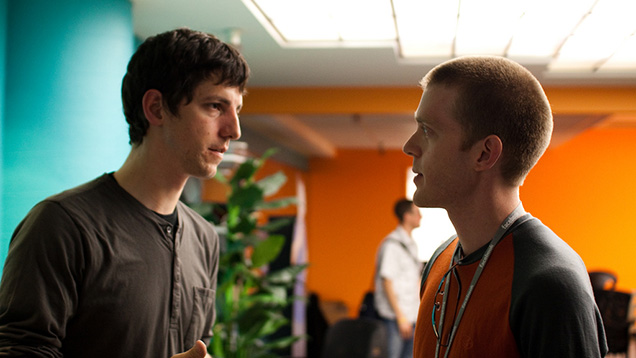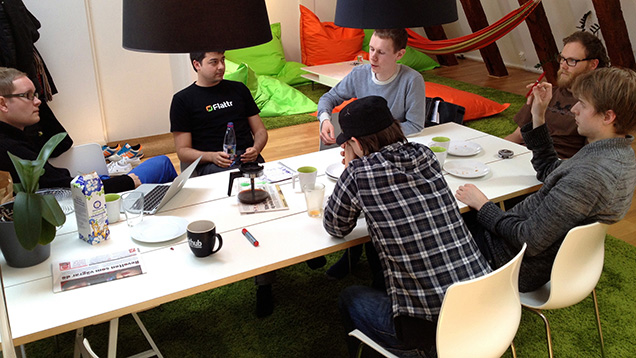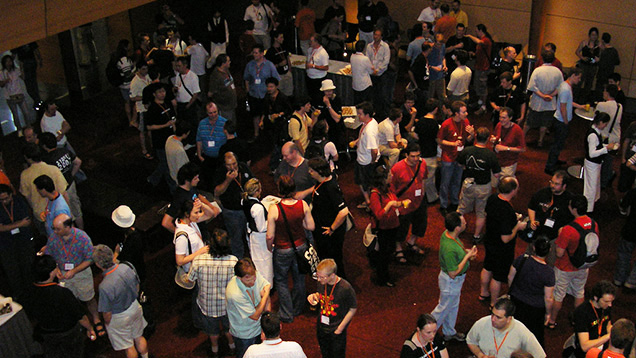Sometimes, professional networking can feel like a never-ending cycle of event hopping and meeting random people. If you’re feeling frustrated, we’ve got some battle-tested information that can help you improve your networking efforts.
Title photo by Paul Fenwick. Section photos by chichacha, Stepan Mazuro, Chris Ford, Flattr.
Meet One Person A Week Instead Of Going To Random Networking Events

Most people that go to these events lead with their needs. For example, they’re hoping to find job opportunities, find buyers for their products and services, and find press coverage. That’s not to say they’re not good people, but unless they’re recruiting, connecting with them in this context is probably not conducive to building your network.
Worse yet, many of these events are structured to facilitate bite-sized, ten-minute conversations with people. If it’s not ruined by interruptions, a short conversation is simply not enough time to better understand each other before swapping contact information.
As a writer, I get media passes to dozens of “networking events” and conferences. I’ve been to few really great networking events. For the most part, they weren’t that conducive to networking. In fact, I can’t even remember meeting a friend or acquaintance from any of these events. As we’ve written before, “a ‘professional network’ is just code for “friends who are willing to help each other professionally”. These events are so busy that I never feel quite like myself.
Instead of subjecting yourself to this method of meeting people, author Ramit Sethi advocates meeting one new person per week. Typically, there’s a reason you’re interested in connecting with this person, which is more effective than meeting a random person at an event. Better yet, if you do some research, perhaps you can start the relationship on really good footing and think of some way to help them solve one of their challenges. (That’s not an invitation to pitch anything though.) Nonetheless, the relatively longer conversation might make for a better foundation for the relationship, and increase the likelihood that this person will pass the “layoff test“.
You could connect with these people via Twitter, even if it’s to ask if you can send them an email about a question regarding one of their projects, interviews or interests. You could also get in touch through a mutual contact (you can find contacts through LinkedIn). You could also use tools like Ten Thousand Coffees. Dinner may be a big step, so set up a quick lunch or coffee. Alternatively, you could set up an informational interview (cold email scripts in this article).
Connect With Internal Colleagues

If you’re already working a full-time job, take advantage of it. First, learning more about each role will probably help refine your internal perspective of the company. You’ll have a new friend who can potentially help expedite requests or informally answer any questions you had about procedures. You could also collaborate on internal side projects together, which would be good for both of your advancement.
Most of us won’t be lifers at our current companies, which means you and your colleagues will likely end up at different companies in a few years. If you ever look for a job somewhere down the line, or if you’re pitching something to one of their future companies, these colleagues could serve as crucial referrals or advocates. They can be crucial contacts for the 2+1 rule.
Although companies hold holiday parties, offsites and other get-togethers to get different teams to mingle, cliques naturally stick together. For example, marketing and sales teams likely know each other well. Product managers probably flitter between designers and developers.
One thing I’d wished I done more at my previous job was connect with people from different departments and take them out for a coffee. Even if you don’t see them day-to-day, a one-on-one conversation makes it easier to reconnect with them, and their teams, at company socials. You might think you’re too busy for this, but it can pay off significantly in the long run.
It can be tempting to stick with just your team and immediate unit. Try to get out and meet as many people as you can, especially if it’s early in your career. Other people will be busy too, but they will probably be open to meeting up with you on a week that their plates aren’t as full.
Get To The Preferred Method Of Communication As Quickly As Possible

The reason is simple: friends message each other. That’s natural. You’ll gradually start to see each other as more than just “professional contacts”. As Marshall McLuhan so famously wrote, the medium is the message.
Take your conversation away from email or LinkedIn to another medium as soon as possible. For some, this could be text message or WhatsApp. For others, it could be on Threema, Twitter DM, or another channel.
Touch base regularly. If you feel the other person is comfortable, start moving beyond professional topics. If you have mutual friends, ask how they met each other. Learn what they do outside of work, what their hobbies are, and what they enjoy doing on weekends. If they’re not replying often, dial it back a bit to make sure you’re not annoying them.
Join (Or Set Up) A Mastermind Group

A mastermind group is a group of individuals that meet regular and help improve each other. This is usually done by discussing business or personal challenges and sticking points. Examples of mastermind groups include Ben Franklin’s Junto and Henry Ford’s mastermind group.
One of the best events I attended was Jayson Gaignard’s MastermindTalks. Gaignard conducted interviews with each applicant and made sure that their top priority was meeting other people. If applicants mentioned anything about pitching products, seeing keynote speakers, or something else, they weren’t a fit for the event and Gaignard would refund their money. You should take that kind of care when setting up or choosing your mastermind group.
Mastermind groups can be expensive since you may have to help people travel to your meetup. Don’t let the name fool you. The term “mastermind” has gotten so appealing that less serious groups or meetups have started using that label.
Levelling Up is Worth It
Networking isn’t something you can just throw more hours, events, and people at. It’s something you must approach strategically. Keep these principles in mind as you make new friends. Meet with fewer people, but form deeper relationships with them. Invest time and energy into your network. Always bring more to the table than you leave with.

Comments